Addtronics W8500 WTX Workstation/Server Tower Case
by Mike Andrawes on January 22, 2000 1:24 AM EST- Posted in
- Cases/Cooling/PSUs
Expansion
One of the advantages of size is that there's more room for expansion and the W8500 does not disappoint with its grand total of 11 drive bays. That includes 5 external 5.25", 1 external 3.5", and 5 internal 3.5" drive bays, which are all located at the front of the case.
External 5.25" devices are mounted in one of the 5 available bays via a simple rail system, very similar to the one used in the original SC750-A and still used on the Addtronics version, the EX-6890. Simply attach the rails to the drive with screws and slide into place. Finally, a single screw on each side secures this assembly to the main chassis. Also worth noting is the fact that the drive rails can be secured in the drive bays, even without a device installed. That way, you'll never have to worry about looking for drive rails when adding additional devices. It actually ships this way from Addtronics - a very nice touch as far as we're concerned.
Attaching a floppy drive to the sole external 3.5" bay is a piece of cake; removal of just one screw is required to release a small bracket to which the floppy drive is attached. The 5 internal 3.5" bays are more conventional, as drives simply slide into place and are attached via screws directly to the chassis.
Motherboard Installation
One of the other big advantages of such a large case is the ease of motherboard installation. In the case of the W8500, this is even easier thanks to a removable motherboard tray. That tray is attached via three screws that are inserted from the rear of the case. A handle allows easy removal of the tray once the screws are removed. Traditional metal standoffs are screwed to the tray and the motherboard is then screwed into the standoffs.
Our test bed ABIT BX6 Revision 2.0 fit with tons of room to spare (below and left), as expected from a server case of this size that was designed to hold much larger extended ATX boards. At 21 inches deep, there was plenty of room to work with, even with a full extended ATX motherboard installed.
For comparison purposes, a WTX motherboard is pictured to the right above. Notice the additional width of the board adjacent to the I/O ports. This particular motherboard, an IWill i840 sample did not take advantage of the optional extra expansion slots afforded by the WTX form factor.


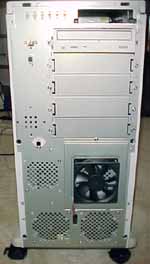
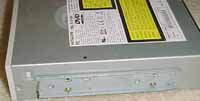
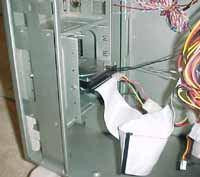
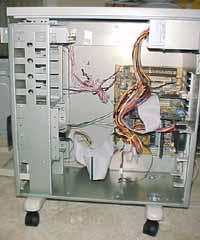
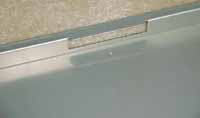

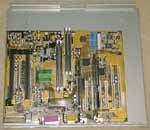








0 Comments
View All Comments